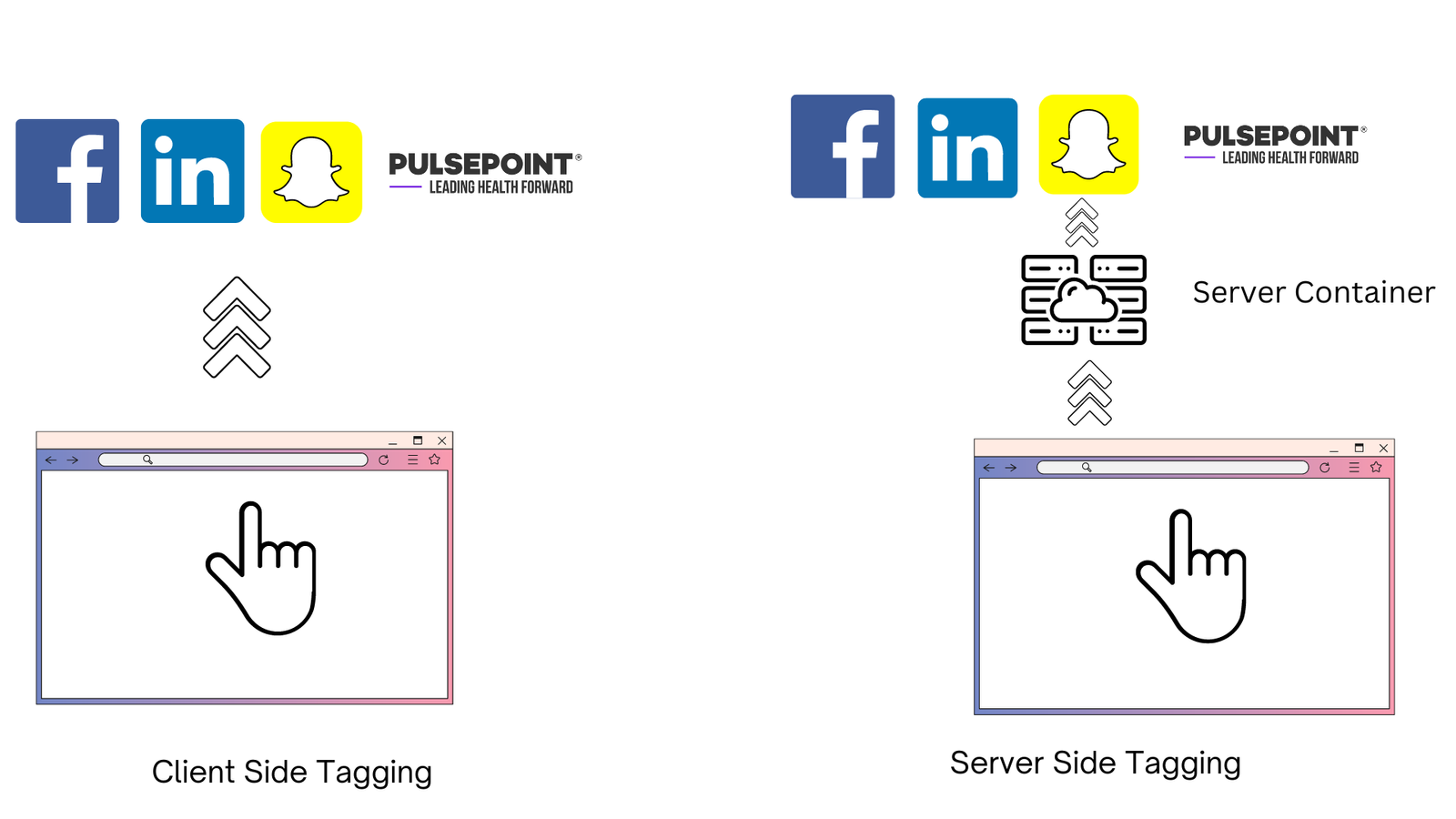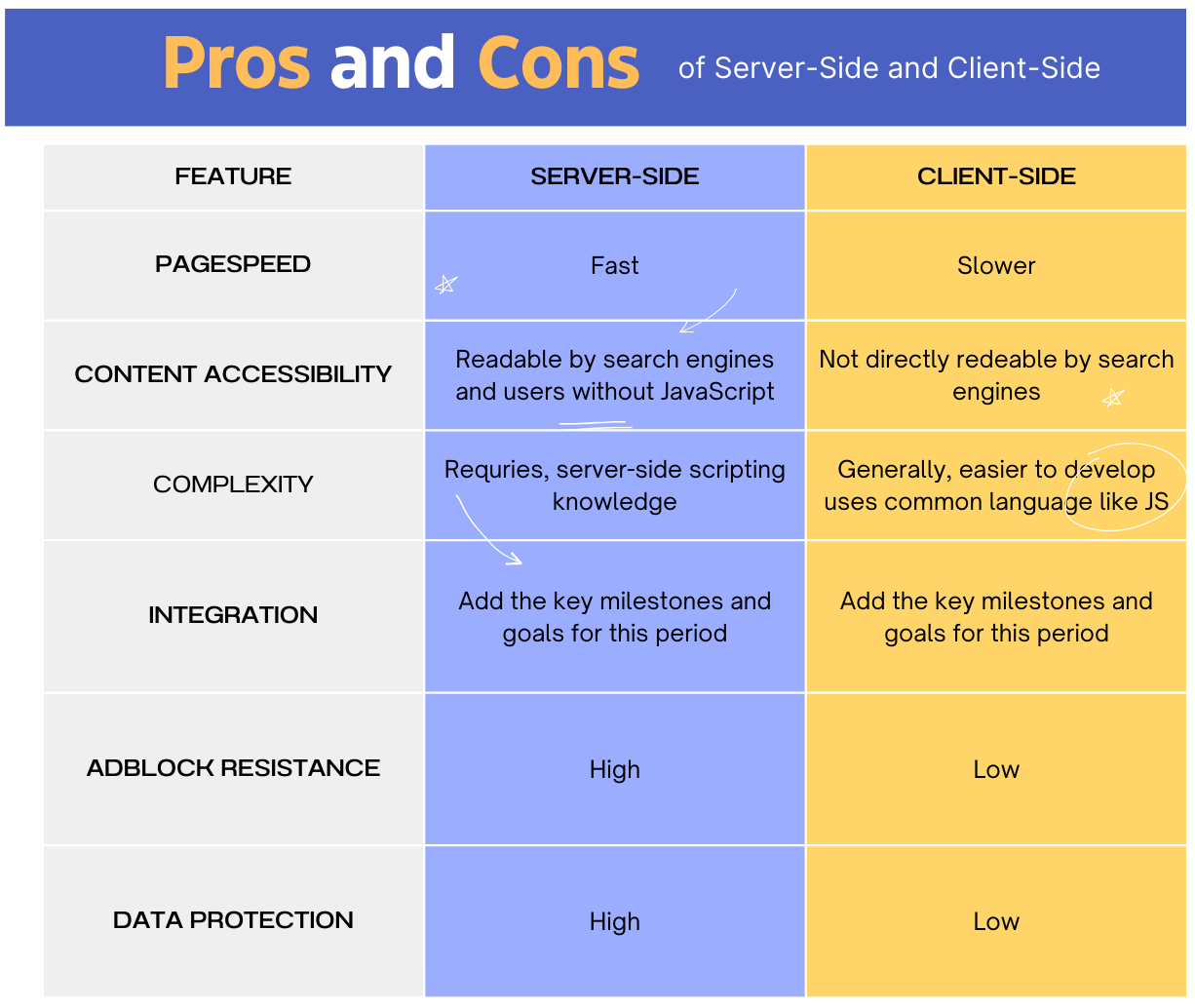Chrome’s Bold Move to Disable Third-Party Cookies

In the digital landscape, data reigns supreme. Understanding web tracking and user behavior is essential for businesses to thrive, but how do we collect this valuable information? Enter the two titans: client side vs server side tracking. While both serve a similar purpose, their approaches and strengths diverge significantly. Let’s delve into their unique characteristics to help you choose the right tool for your web tracking data collection needs.
Key Takeaways
- What is Web Tracking Client Side vs Server Side Tracking?
- Client-Side Tracking: Facing Challenges in a Cookie-less Future
- Client Side vs. Server Side Tracking: Picking the Right Tool
- How Client Side vs Server Side Tracking Work
- Pros and Cons of Client Side vs Server Side Tracking
Simplifying analytics implementation involves understanding event consolidation and property usage. However, the crucial question remains: where to track data – client side vs server side tracking?
While both extremes (all client or all server) might seem tempting, the reality is nuanced. Some user data, like clicks and scrolls, is only available on the client-side. Conversely, ad blockers can disrupt client-side tracking, making server-side implementation ideal in such cases.
What is Client Side vs Server Side Tracking?
Client-Side vs. Server-Side Tracking: Collect data directly in the user’s browser for ease of use, but face performance and reliability concerns. Server-side web tracking processes data on your server for control and security, but requires technical expertise and higher costs.
Choose based on your needs: simplicity and affordability favor client-side, while privacy, security, and performance lean towards server-side. A hybrid approach might be the best fit for optimal balance in your web tracking strategy.
Client-Side Tracking: Facing Challenges in a Cookie-less Future
Client-side tracking, the traditional method of collecting user data through browser tags like Google Tag Manager, faces a challenging future. Here’s why:
- Ad Blocker Rise: Ad blockers are increasingly common, hindering client-side tracking’s ability to gather data.
- Third-Party Cookie Crumbling: Google Chrome’s phase-out of third-party cookies by 2023 deals a significant blow to client-side tracking’s effectiveness.
- Data Quality Decline: Limited data due to ad blockers and cookie restrictions can lead to inaccurate insights and hinder marketing efforts.
How Server-Side Tracking Can Help
Server-side tracking offers a solution to these challenges by collecting data on the server instead of the user’s browser. This approach has several advantages:
- Bypasses Ad Blockers: Server-side tracking scripts run on the server, so they are not affected by ad blockers that typically target client-side scripts.
- First-Party Data Focus: Server-side tracking relies on first-party data, which is collected directly from users on your website. This data is less susceptible to privacy restrictions compared to third-party cookies.
- Improved Data Accuracy: Server-side tracking can capture data that might be blocked by ad blockers or browser restrictions, leading to a more complete picture of user behavior.
For example, imagine you run an e-commerce website. With client-side tracking, an ad blocker might prevent tracking of a user adding an item to their cart. However, server-side tracking can capture this information on the server, ensuring you have a complete record of user actions, even with ad blockers in place.
Client Side vs. Server Side Tracking: Picking the Right Tool
While both client side vs server side tracking offer valuable data collection, they serve different purposes. Understanding their strengths and weaknesses helps you choose the right approach for your needs.
Client Side Tracking:

Pros:
- Easy Implementation: Often implemented with a simple code snippet, making it a quick and user-friendly option.
- Direct User Data: Provides access to user interaction data like clicks and scrolls, helpful for ad targeting.
- Lower Cost: Typically less expensive than server-side tracking.
Cons:
- Privacy Concerns: Future regulations and user privacy concerns could limit its effectiveness.
- Vulnerability: Ad blockers and browser restrictions can disrupt data collection.
Server side Tracking:
Pros:
- Enhanced Control & Security: You control the data, keeping it secure from third-party access.
- Browser Independence: Works seamlessly even with ad blockers and browser limitations.
- Optimized Marketing & Analytics: Provides a solid foundation for marketing automation, personalization, and advanced analytics.
Cons:
- Higher Cost: Maintaining server infrastructure adds significant cost compared to client-side tracking.
- Technical Complexity: Setting up and maintaining a server-side tracking system requires more technical expertise.
The ideal approach often involves a combination of client side vs server side tracking methods. Client-side tracking remains valuable for its ease of use and direct user data access. Server-side tracking adds a layer of control, security, and browser independence.
How Client Side vs Server Side Tracking Work?

Client side vs server side tracking interactions are the backbone of any modern web application. They work together in a seamless dance to deliver the content and functionality you see on your screen. Here’s a breakdown of their roles and how they interact:
- User Action: You click a button, submit a form, or type in a search bar.
- Client-Side Request: The browser sends an HTTP request to the server containing information about the user’s action.
- Server Processing: The server receives the request, processes it based on its logic and data, and generates a response.
- Server Response: The server sends an HTTP response back to the browser, containing data or instructions.
- Client-Side Update: The browser receives the response and updates the web page accordingly, often using JavaScript to manipulate the DOM (Document Object Model).
Key Differences and Their Impact on User Experience
Impact on User Experience:
- Responsiveness:
- Client-Side: Faster initial interactions and dynamic updates without full page reloads. However, limited processing power can lead to slower complex tasks.
- Server-Side: Can handle heavier processing but requires data transfer, potentially causing delays depending on internet speed.
- Resource Usage:
- Client-Side: Consumes user device resources like battery and processing power. Can drain resources on lower-end devices.
- Server-Side: Offloads processing from user devices, conserving their resources.
- Offline Functionality:
- Client-Side: Limited functionality without internet access if resources are not stored locally.
- Server-Side: Requires internet connection for all functionality.
- Security:
- Client-Side: Sensitive data might be visible or accessible on the user’s device.
- Server-Side: Sensitive data can be stored and processed securely on the server with stricter access controls.
Pros and Cons

Conclusion
In conclusion, understanding client side vs server side tracking empowers businesses to collect valuable user data. While client-side tracking offers ease of use and direct user interaction data, it faces challenges in a privacy-focused future. Server-side tracking provides enhanced control, security, and works around ad blockers, but requires more technical expertise. Businesses can leverage a hybrid approach or choose the method that best suits their needs for optimal data collection and a successful digital strategy.





